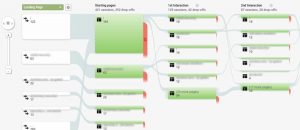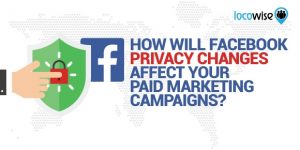By Alex Charalambous, Published November 6, 2014
Landing pages are an essential part of content marketing and lead generation. Creating landing pages for each campaign or premium content offer allows you to more effectively convert website visitors into leads by simplifying the offer process and eliminating distractions.

And the design of your landing pages is key to converting those visitors into your next potential customers. When visitors land on your page, you want them to be able to quickly understand what they’re downloading and how it will be valuable to them. Following the nine design tips below will be critical to the success of your landing page.
1. Consistent branding and logo
It’s important for your landing pages to look like they belong on your website. This doesn’t meant they need to look exactly like the rest of your website, but they do need to have consistent branding. Having your company logo at the top of every landing page ensures that visitors know where they are and who is providing the content.
2. Limited navigation
Removing the main navigation from landing pages is almost always a good idea. It’s best to limit the options that a visitor has once they arrive on your landing page. Having a menu and other secondary links are likely to cause them to abandon the landing page and drift into other areas of your website—before converting.
3. Clear, compelling headline (and sub headline)
Your headline should be clear, direct and explain exactly what the offer is. It should be consistent with the copy that was used in the call-to-action or email that was used to promote the landing page. And it should also make your visitors want to read further. Having a sub headline that explains the value in your content is a good strategy to engage your visitors to take action.
4. Premium offer
Every landing page should promote a premium offer that your visitor receives in exchange for providing some information in a form. The offer could be premium content like a whitepaper, eBook, report or webinar, or another type of offer like a free trial, demo or free consultation.
5. Enticing visuals
Visuals are a great way to engage your visitors and make your offer more exciting, but having too many can make your page feel cluttered, causing people to leave the page. Be sure there is still plenty of white space to make the page seem simple and clean. Have images and graphics that are relevant to your offer but don’t distract your visitor from the end goal.
6. Simple, direct copy
Your landing page copy should be short and to-the-point. The copy should also be relevant to the call-to-action. It should explain exactly what the prospect will learn or what value they will receive from your offer. Bullet points or bolded words are a great way to get your point across quickly.
7. Standout call-to-action (CTA)
What do you want your visitors to do when they land on your page? There should be a clear call-to-action button that jumps off the page. Color, size, text and placement all affect how effective the CTA is. And, there should only be one CTA per landing page so you don’t confuse your visitors.
8. Lead capture form
This could be arguably the most important part of your landing page. But it’s best not to ask for too much information on the form, only the most important. You should require a visitor to provide key information like name, company, email and job title. If you want to learn more about a lead, you can make certain questions optional or implement progressive profiling so that you are able to ask additional questions each time they interact with one of your forms.
9. Social sharing
You want visitors to share your valuable offers with their friends and colleagues, so make it easy for them! Be sure each landing page has social media sharing buttons or links prominently displayed and that make it easy to promote on Facebook, Twitter, LinkedIn, etc. You should also include a “forward to a friend” option for those who prefer to use email.
After you have designed the perfect landing page, be sure to continuously A/B test different elements of the page and make adjustments depending on the results. Landing pages can be a way for your company to turn website visitors or “suspects” into known leads. But always remember, if a visitor is going to give you their contact information, they are going to expect to get something of value in return.
Business Articles | Business 2 Community
(1146)








